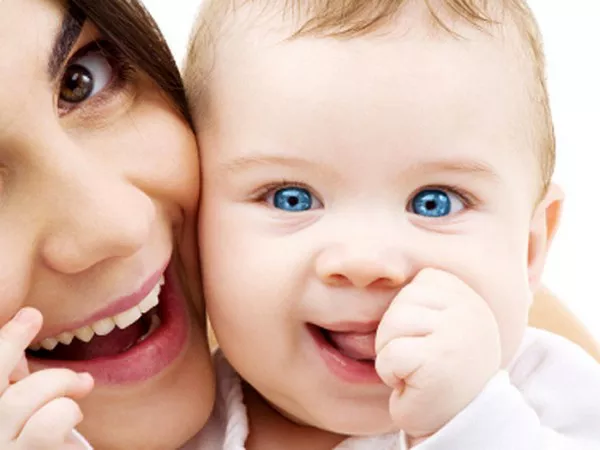When a baby is born, their vision is still developing. New parents often wonder about the colors infants can see. Understanding how an infant’s vision works can help parents engage with their baby more effectively. This article explores what colors babies can see first and how their vision develops over time.
Understanding Infant Vision
At birth, babies have limited vision. They can see objects that are about 8 to 10 inches away. This distance is perfect for looking at their parents’ faces during feeding. However, their eyesight is blurry. They cannot see fine details or colors clearly at first.
Babies are born with the ability to perceive light and dark. They can differentiate between light and shadow, but this does not mean they can see colors. Infants begin to see colors as their vision matures.
Development of Color Vision
The development of color vision happens in stages. Here is a general timeline of how babies develop their ability to see colors:
Birth to 1 Month
During the first month, infants primarily see in shades of gray. They can detect some contrasts between light and dark. This ability helps them notice shapes and outlines. However, they do not see colors like older children or adults do.
1 to 2 Months
By the time a baby reaches one month, they may start to notice some colors. Research shows that infants begin to see red and green shades during this period. These colors are among the first to be recognized because they stand out more against gray backgrounds. Babies at this age may focus on bright colors that attract their attention.
2 to 3 Months
Around two to three months, a baby’s color vision becomes more developed. They can see blues and yellows. Infants start to distinguish between different colors and can recognize simple color patterns. This stage allows them to enjoy colorful toys and books. Bright colors can engage their attention and stimulate their vision.
4 to 6 Months
Between four and six months, babies gain even more color perception. At this stage, they can see a broader range of colors, including purple and orange. Their ability to distinguish between colors improves significantly. Babies also begin to show preferences for certain colors. This is the time when they might reach for toys in specific colors, indicating their developing vision and preferences.
6 to 12 Months
By the time a baby is six months old, their vision is almost fully developed. They can see colors similar to an adult. Their depth perception and ability to track moving objects also improve. Babies can now enjoy a wide variety of colorful toys, clothes, and books. Their visual world becomes vibrant and full of stimulation.
Factors Influencing Color Perception
Several factors can influence how infants perceive color. Here are some important considerations:
Lighting Conditions
Lighting plays a significant role in how colors appear. Bright, natural light can enhance color perception. Dim lighting can make colors look duller. When playing with infants, use bright lighting to help them see colors more clearly.
Contrast and Patterns
Babies respond better to high-contrast colors. Black and white patterns can captivate their attention. Bright colors paired with contrasting colors are also more visually appealing. Toys and books with bold patterns can help stimulate their visual development.
Individual Differences
Every baby develops at their own pace. Some infants may recognize colors sooner than others. Genetics, environment, and exposure to different stimuli can all play a role. Parents should observe their baby’s reactions to colors and adjust their activities accordingly.
Engaging with Infants Through Color
Understanding what colors infants see first can help parents engage with their babies more effectively. Here are some tips for using colors to promote visual development:
Choose Bright Colors
Use bright and bold colors in toys, clothes, and nursery decor. Infants are naturally attracted to bright colors. This can stimulate their interest and curiosity.
Utilize High-Contrast Patterns
Incorporate high-contrast patterns in toys and books. Black and white designs can capture a baby’s attention and aid visual tracking. Simple patterns can be more engaging for newborns.
Create a Colorful Environment
Surround your baby with colorful objects. Brightly colored toys, blankets, and play mats can create a visually stimulating environment. This helps babies explore colors and shapes.
Use Colorful Books
Introduce colorful board books during playtime. Books with bright illustrations and simple patterns can be enjoyable for babies. Reading to infants also supports language development.
Observe Baby’s Reactions
Pay attention to your baby’s reactions to different colors. Notice which colors they seem to prefer or react to most. This can guide your choices in toys and activities.
Engage in Color Games
Play simple games that involve colors. For example, hold up different colored objects and name the colors aloud. This can help build their color recognition skills as they grow.
See also: When Do Infants See Color
Conclusion
In summary, infants start to see colors around one month of age, with red and green being among the first colors they recognize. As their vision develops, they can see more colors, eventually reaching full color vision by six months. Understanding the stages of color vision can help parents create an engaging environment for their babies. By using bright colors, high-contrast patterns, and colorful books, parents can stimulate their infants’ visual development.
Parents should remember that every baby develops differently. It is essential to be patient and observe your baby’s reactions to colors. Engaging with your baby through color can foster a love for exploration and learning. The world of colors is just beginning for infants, and parents play a crucial role in guiding them through this exciting journey.
Related topics:


